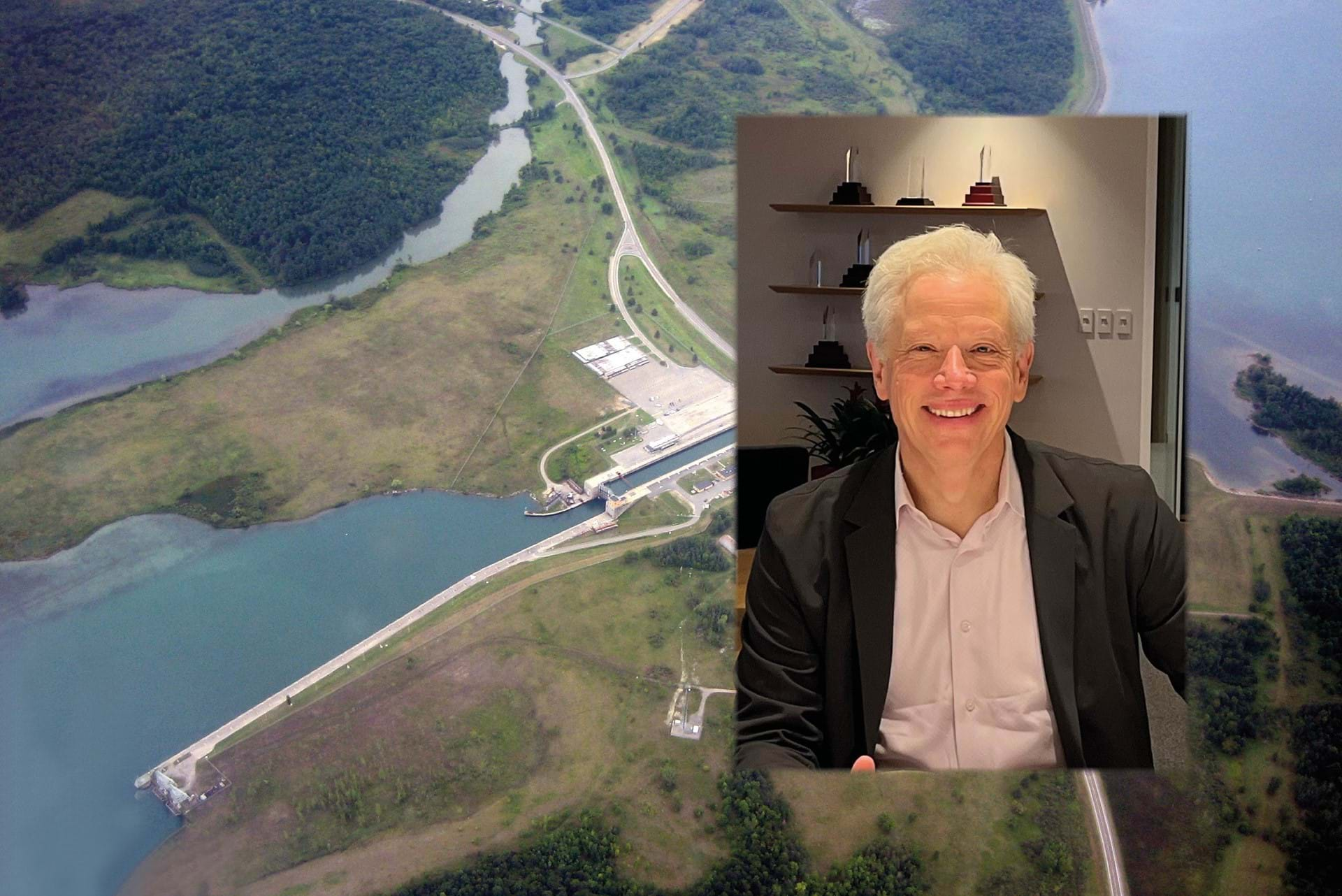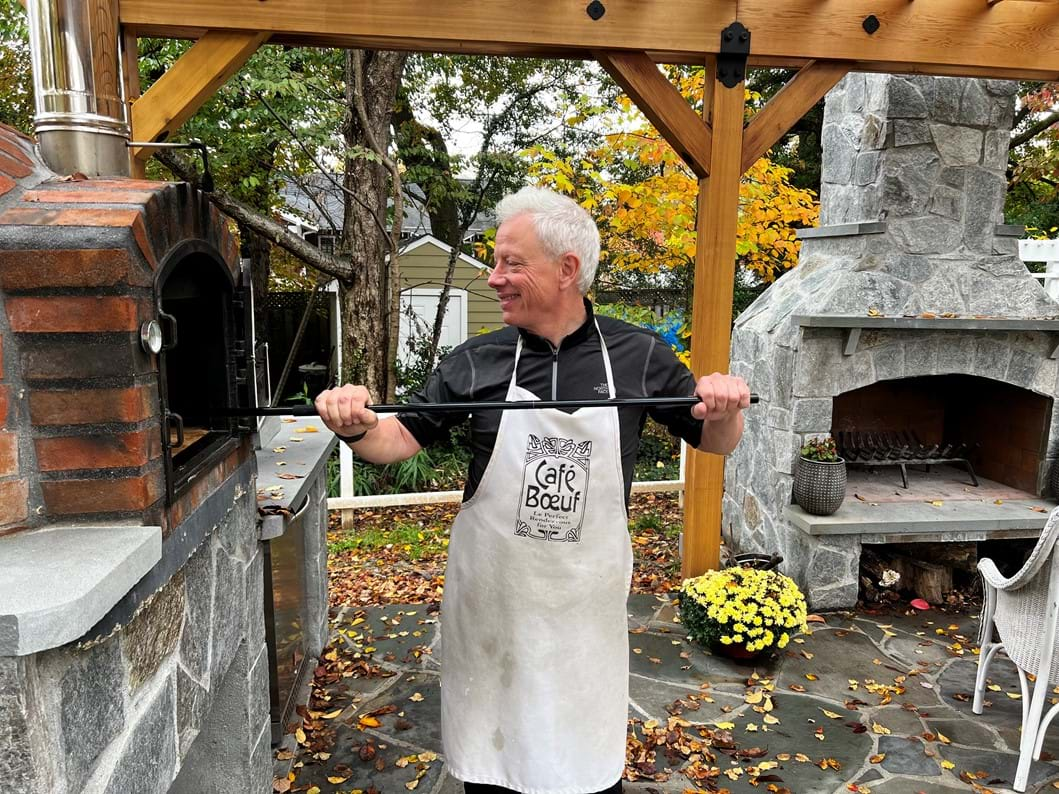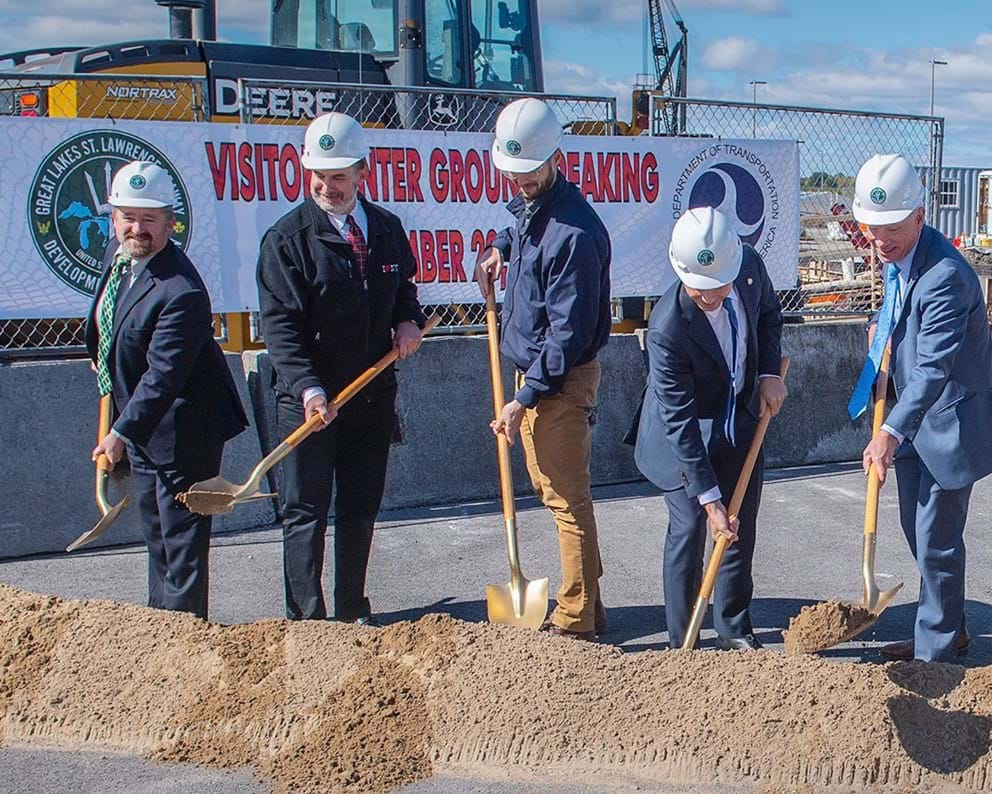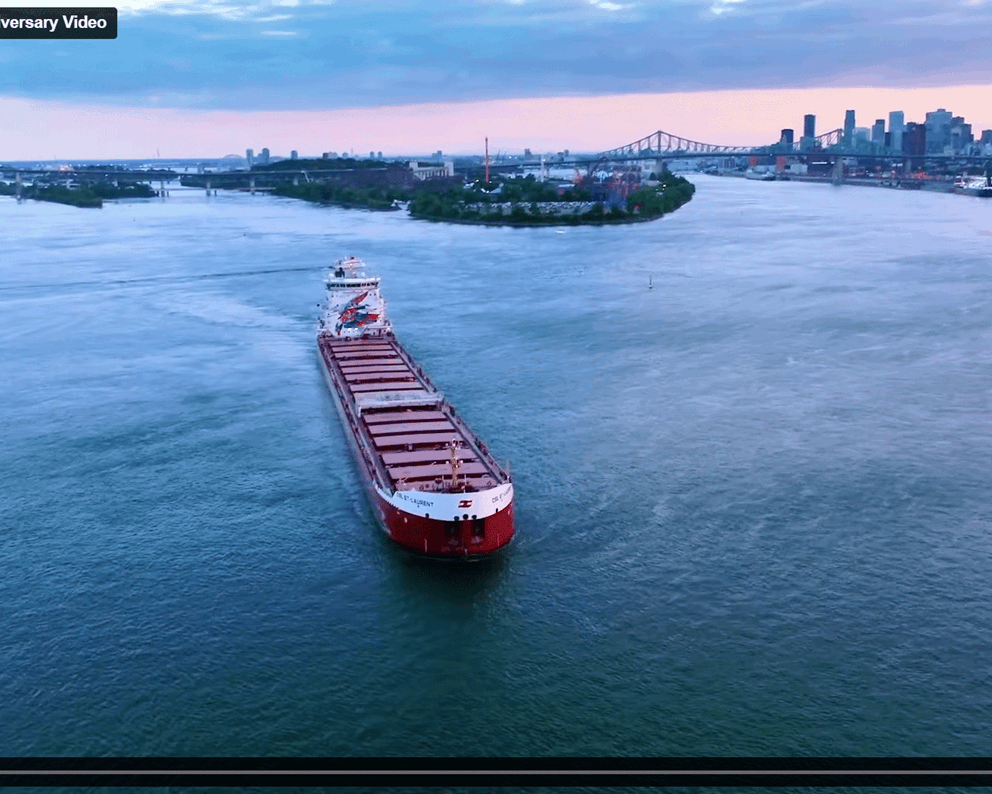
Happy retirement, Craig!
Anchors aweighCraig H. Middlebrook leaves U.S. Seaway administration knowing the system is in good shape
After 34 years in public service, Craig H. Middlebrook retired from his post as Deputy Administrator of the Great Lakes St. Lawrence Seaway Development Corporation at the end of September. His decision followed 27 years at the U.S. Seaway administration, which he’s led over the past five-plus years, as well as earlier for a total of 7 ½ years altogether.
“There’s never a perfect time to leave, but the Seaway is in a really good place right now in terms of what has been achieved and its future outlook,” he says. “Plus, I can’t wait to spend more time cooking and baking – especially baguettes.”

David Bolduc, Green Marine’s President, appreciates what Middlebrook has done for Green Marine as a dedicated and active member of the board of directors and various involvement since the program’s inception. “You honestly couldn’t ask for anyone more committed in terms of engagement,” Bolduc says.
We’re really going to miss his positive energy and his determination to get things done.
While Middlebrook would have liked to see a few more projects to their completion, he knows they’re in good hands with former Port Milwaukee’s director Adam Tindall-Schlicht taking over the helm as the new administrator. Plus, the Seaway itself is in its best condition since its opening in 1959. “For the last 13 years, the U.S. and Canadian Seaway authorities have invested US$925 million in rehabilitating and modernizing the infrastructure so that we can fulfil our mission of moving vessels safely, efficiently and in an environmentally sustainable way,” he says.
Middlebrook is pleased that a Seaway Infrastructure Program has replaced the former Asset Renewal Program that required yearly bi-partisan approval from the U.S. Congress. “Fortunately, we had our funding requests authorized for each of the past 11 years, but it was always an uncertainty, whereas now the funding is incorporated into the Seaway’s budget as part of its annual spending,” he explains.
He also notes the system’s nearly 100% reliability. “And it’s been up there during my 27 years, which for infrastructure as old as it is in the weather conditions it endures is a remarkable tribute to our engineers and to the Canadian and U.S. governments for continuing to keep the system running optimally,” he adds.
It was also his pleasure to be at the ground-breaking ceremony a day before his retirement for the new visitor centre that is planned to welcome visitors at the U.S. Eisenhower Lock in Massena, New York.


Photos: GLSLSDC Facebook
I’m so glad that the centre is being constructed to better tell the story of the Seaway and its importance to both Canada and the U.S.
He credits unprecedented binational cooperation for helping to generate more than 38 million metric tons of annual Seaway cargo, which translates into US$35 billion in economic activity and upwards of 237,000 jobs.
“One of the Seaway’s biggest challenges is maintaining the cooperation of not only the federal governments on each side of the border, but that of eight states and two provinces,” he notes. “And this was done smoothly even during the challenges presented by the COVID-19 pandemic, truly showing the system’s resilience as a cohesive means of reliable transportation.”
It hasn’t always been this way, he adds. “I give a lot of credit to Guy Veronneau, who was the first president of the St. Lawrence Seaway Management Corporation when the Canadian side of the system was commercialized in 1997,” Middlebrook recalls. “The U.S. had a lot of questions about how that might work, and he realized that if we wanted to take the Seaway beyond day-to-day operations to a visionary strategy level, the collaboration and coordination by the two Seaway administrations had to become more substantial.”
He recalls Veronneau clearing the way for the U.S. Army Corps of Engineers to evaluate the Seaway in its entirety. “That was, dare I say, an historic moment in the Seaway’s existence and ultimately led to a 2007 report involving seven agencies: the two Seaway corporations, Transport Canada, the U.S. Department of Transportation, the U.S. Army Corps of Engineers, Environment Canada, and the U.S. Fish and Wildlife Service,” he says.
The retiring deputy administrator has always made it his priority to maintain and further build on the quality of those relationships. “It’s something that requires time and effort, but it’s well worth it in the long run,” he says.
Middlebrook is now excited about both Seaway corporations having committed to collaborate with the Volpe National Transportation Systems Centre to modernize the Seaway’s vessel traffic management with a new system called the Voyage Information System (VIS).
“The Seaway pioneered the use of Automatic Identification System (AIS) for vessel traffic navigation 20 years ago using differential GPS and a screen interface to provide real-time transmission of location data, as well as other information, such as the weather and current conditions,” Middlebrook says. “Now we’re looking at the aviation industry’s air traffic flow management to determine how we can use those concepts to establish dynamic predictability about a vessel’s journey and arrival at its destination.”
Both Seaway administrations were already working closely together by the time Green Marine was created 15 years ago, Middlebrook says. So, it only made sense, he says, to jointly report on the overall system’s environmental progress for Green Marine’s certification.
“We’re so integrated operationally, issuing joint regulations all the time,” he notes.
Given the high quality of collaboration between us, it wasn’t a heavy lift to figure out how to equitably measure our sustainability efforts, and the initial disparities pointed out where each of us could do better so that we came up to the same levels.
As for letting all Seaway things go, Middlebrook is keen. “I've had the ability to work in a public institution on behalf of the public good for 34 years, doing meaningful work, and collaborating with people from the U.S. and Canada whom I admire and respect and many of whom I now call friends,” he says. “If that isn’t the definition of a good career, I don't know what it is.”
His dad, who as an electrical engineer was always a very practical guy, marveled at his son managing to find a job that put to full use his studies in Law, Political Science, and French Literature.
“Working for the Seaway has been the job of a lifetime,” Middlebrook says. “I am eternally grateful to former Administrator Gail McDonald, who passed away in January 2020, for inviting me to join her when she was appointed by former President Bill Clinton to the Seaway following our work together at the Interstate Commerce Commission.”
Middlebrook started out at the Seaway as deputy chief counsel and shortly thereafter became chief of staff, and ultimately deputy administrator. He has worked under five presidents while at the Seaway.
I know it sounds like a cliché, but I will miss the people most!
“It’s challenging at times dealing with so many jurisdictions but taking a collaborative approach builds coalitions, and many professional and personal friendships.”
Some of those friends might want to drop by Middlebrook’s household to check out the new wood-fired oven installed in the backyard. “I love to cook and bake, especially French bread, and I am told I have become quite good at it,” he says. “I plan to do that and hang out with my wife, Stacey, our dog, Lucy, and our cats, Meezer and Winky.”
A true Francophile, he also plans to travel more often with his wife, his son, Henry, and daughter, Ella, to France, where he lived for a short while, as well as to Quebec where he has many francophone friends. “I do absolutely love everything about the French language, French culture, and, yes, food – especially the bread.”

This content is not available because some cookies are blocked.
By clicking on this link, you agree that Youtube may collect data about you for targeting purposes. The video content will be displayed.
The St. Lawrence Seaway – Ready for the Future
